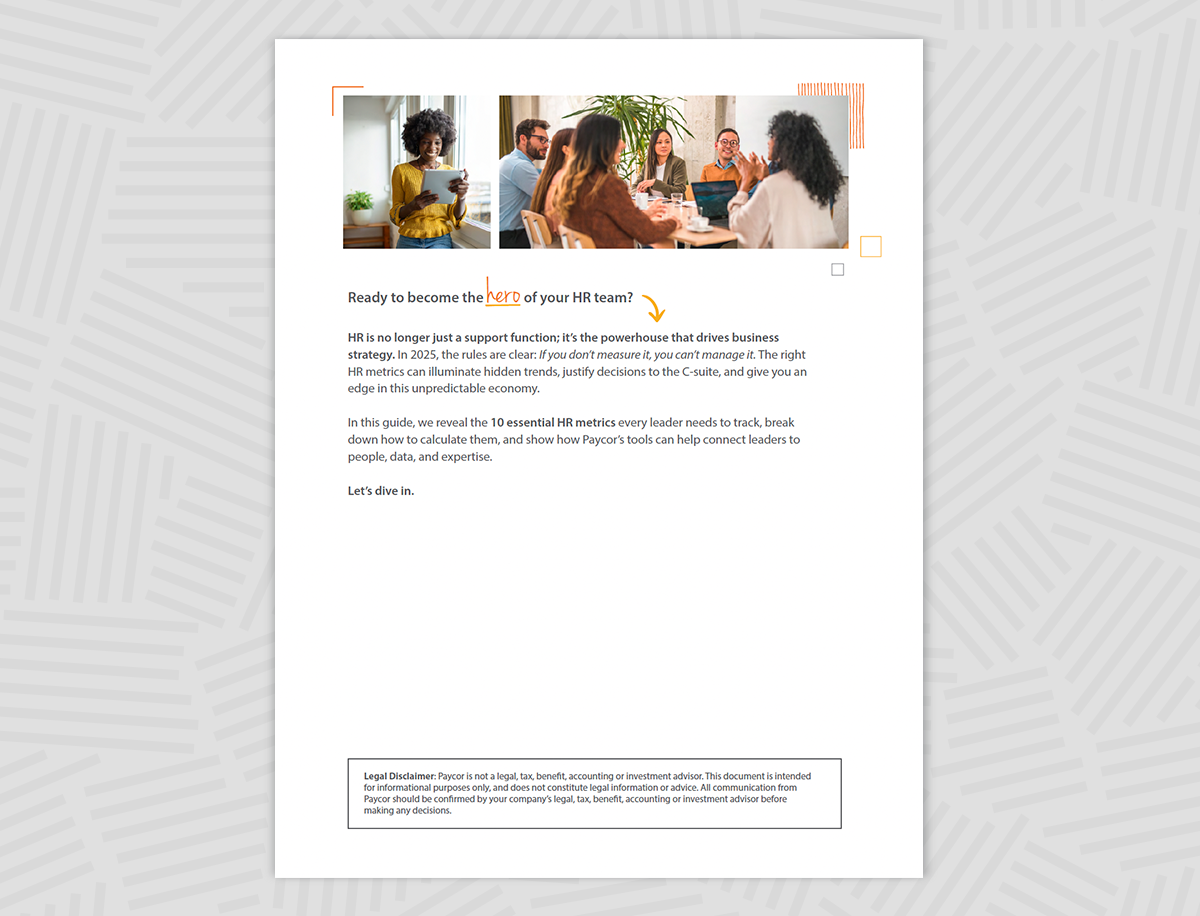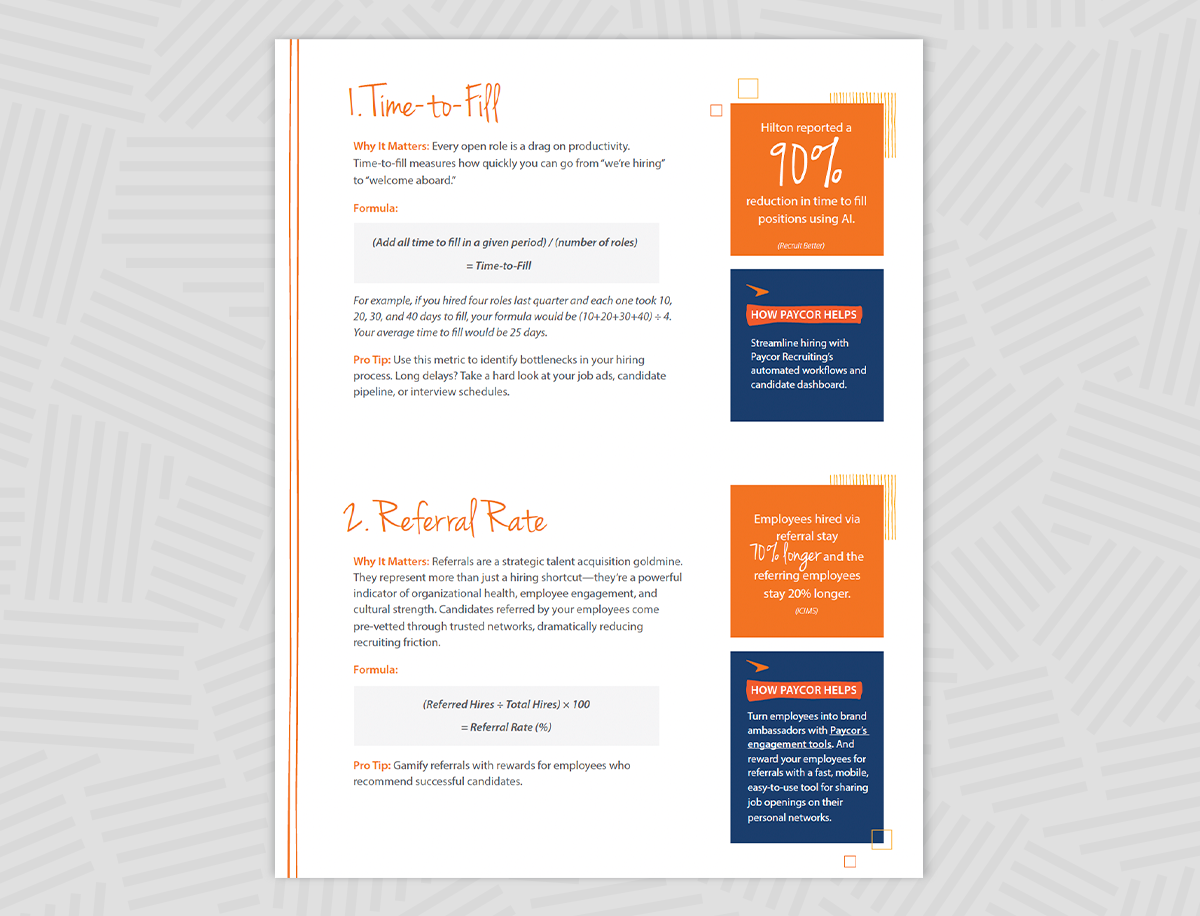
HR is no longer just a support function; it’s the powerhouse that drives business strategy. In 2025, the rules are clear: If you don’t measure it, you can’t manage it. The right HR metrics can illuminate hidden trends, justify decisions to the C-suite, and give you an edge in this unpredictable economy.
Download our guide and learn the 10 essential HR metrics every leader needs to track:
- Track voluntary turnover to see if you have a hiring issue or a manager issue.
- Calculate how much it costs to hire from recruiting to onboarding.
- Discover if your employees are engaged by calculating your absenteeism rate.
- Track time-to-fill open roles to gauge the effectiveness of your recruiters.












